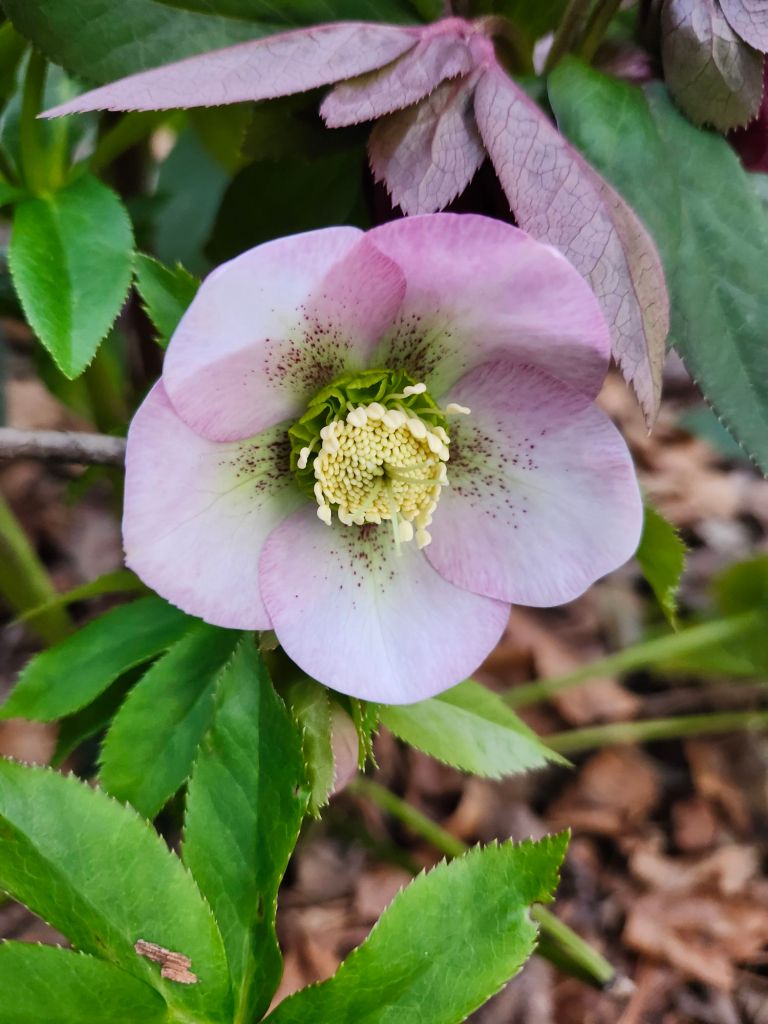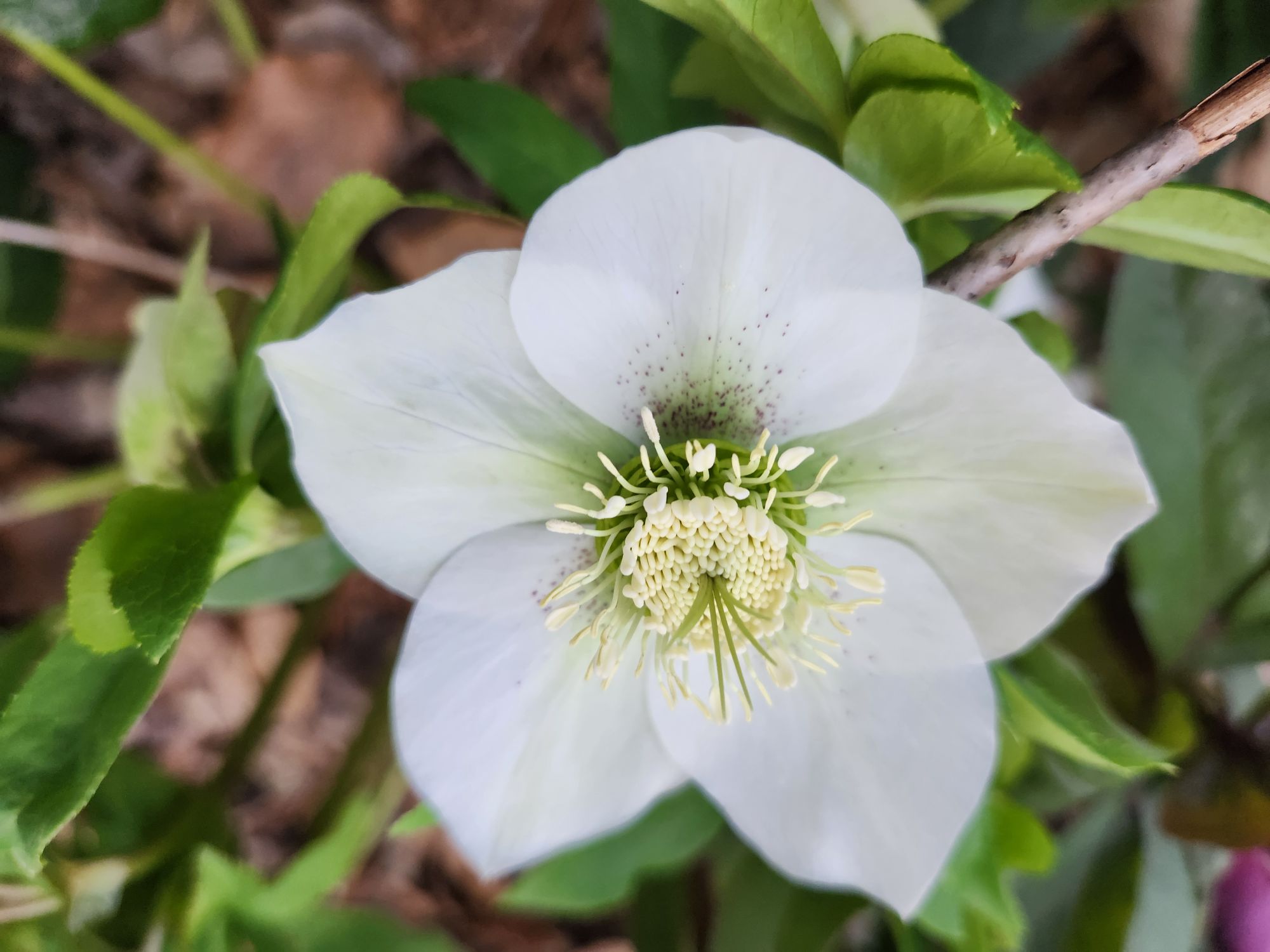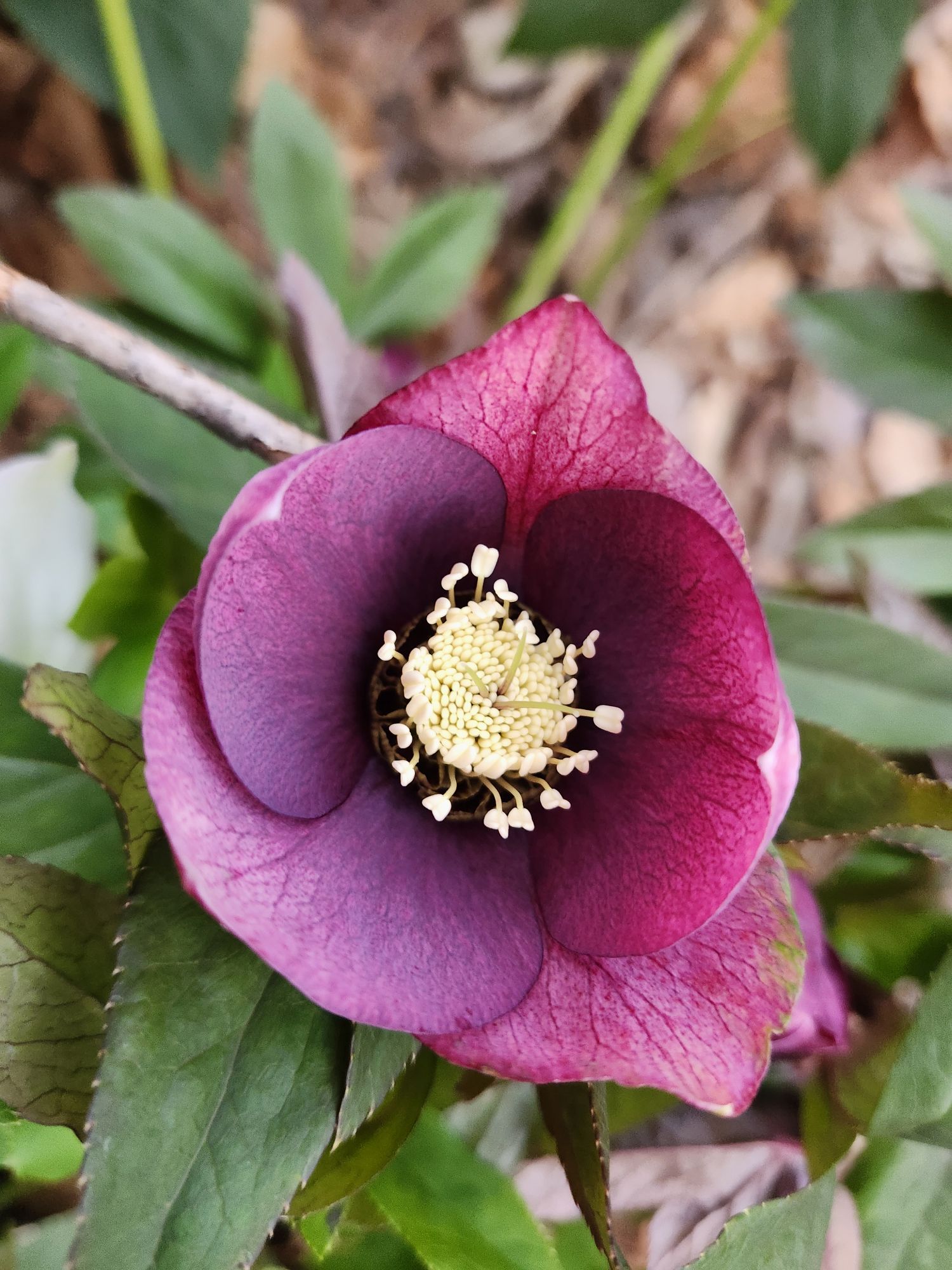Barbara alerts me that she has discovered a marvel, a hellebore with flowers of three colors (below). I am quite pleased she has made the rounds on this mild early March morning, but her discovery is far short of astonishing.

Unsurprisingly, carelessness in failing to transplant (or remove) hellebore seedlings has yielded several delightful (for now) clumps displaying flowers of two and three varied colors. This primary lesson in genetics confirms that seedlings (or children) often possess considerably different traits from their parents.

Beneath the skirt of foliage of many hellebores are dozens of seedlings. In the garden, there are thousands that must be weeded out or transplanted. Most are moved or discarded long before flowering, but I must be excused for missing several, and here is the result of my sloth.

The clumps are simply three plants, a parent and two seedlings growing in close proximity. After several years that seedlings are allowed to grow, I find it difficult to distinguish the parent from the offspring. With many dozens in the garden, it’s doubtful that I’ll dig and separate the tangled plants. I expect the task would not be difficult today, but I feel no urgency.

At the start of March, all hellebores are now flowering, with the earliest to bloom, Christmas roses (Helleborus niger) now fading. Many of the most recent hellebores to flower will remain colorful into April, though all will be overlooked as the garden fills with foliage and flower.